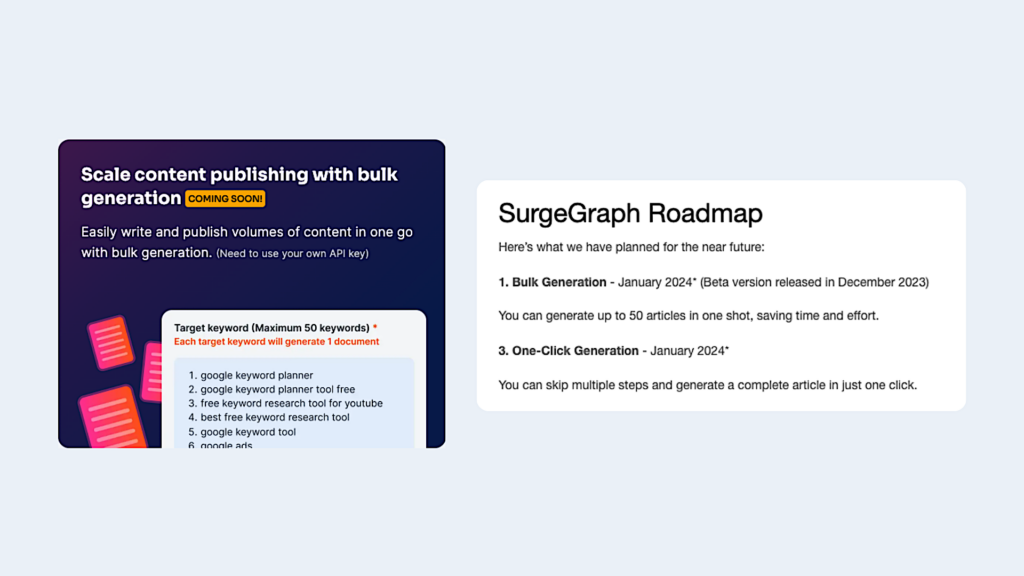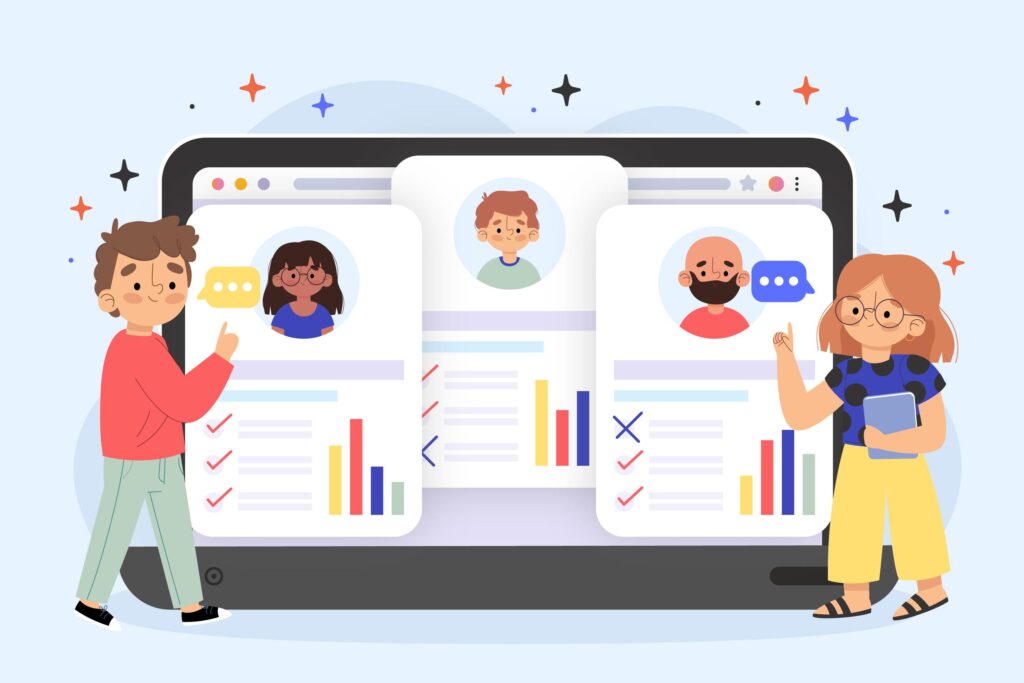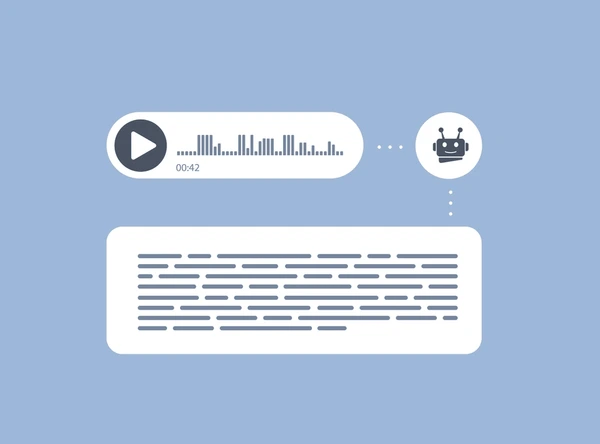
AI content creation tools are shaking up the way we make digital content, using smart algorithms and machine learning to churn out articles, blogs, videos, and even more intricate narratives quickly and efficiently. According to a report by Statista, the global artificial intelligence software market is expected to skyrocket to about 126 billion U.S. dollars by 2025. That’s a massive surge, highlighting just how essential AI has become in boosting productivity across different fields, including content creation, graphics, collaboration, and videos, with big players like Google leading the charge.
These tools aren’t just making our lives easier; they’re also elevating the quality of our work. By automating routine tasks and diving deep into vast amounts of data for insights, they’re speeding up the creative process for everything from social media content to content marketing. And as more industries jump on the AI bandwagon for content generation, understanding what these tools can do is crucial to stay ahead.
Table of Contents
Understanding the Role of AI in Content Creation
Volume and Speed
AI has drastically changed how much content we can produce in a short time. Before, content creators would spend hours, even days, crafting blog articles or reports. Now, AI tools can generate similar pieces in minutes.
This speed is not without its advantages. Businesses can keep their websites updated with fresh content regularly, including blogs, Google-friendly words, and even memes. News outlets can publish breaking news faster than before. However, this increase in volume and speed also comes with challenges. There’s more content out there than ever before, making it harder for any single piece to stand out.

Human to Machine Shift
The transition from human-generated to machine-assisted content creation marks a significant shift in the digital landscape. Initially, all online content was written by people who spent considerable time researching and writing each piece.
Today, many companies use AI to assist with or even fully handle their content creation needs. This doesn’t mean humans are no longer needed but rather that their roles have evolved. Writers now often work alongside AI tools to help ensure accuracy, inject creativity into the generated copy, and go beyond basic features.
This shift brings both pros and cons:
| Pros | Cons |
|---|---|
| – Increased efficiency – Ability to produce large volumes of content quickly – Reduced costs for businesses | – Potential loss of jobs for traditional writers – Risk of lower quality if not properly supervised – Possible over-reliance on technology which could stifle creativity |
Personalized Content
One area where AI truly shines is in personalizing content for different audiences, helping to tailor copy and features. By analyzing data on user behavior and preferences, AI tools can tailor articles, product recommendations, emails, social media content, and more specifically to individual users’ interests.
For example, an e-commerce website might use AI to show visitors products they’re most likely interested in based on past browsing history or purchases.
Newsletters sent by companies may contain personalized article suggestions thanks to AI analysis of previous interactions with email campaigns.
Personalization features help improve user engagement because people are more likely to interact with content that resonates personally with them.
Exploring the Benefits of AI-Powered Content Creation
Time Efficiency
AI content creation tools significantly reduce the time spent on research and data analysis. Traditionally, these tasks require hours or even days. With AI, this timeframe is cut down to minutes.
The technology sifts through vast amounts of data quickly. It identifies relevant information based on keywords and topics. This process ensures that content creators can focus more on crafting their message rather than getting bogged down by research.
Consistency & Scalability
One major advantage of using AI in content production is increased consistency. Maintaining a uniform tone and style across various pieces can be challenging for human writers, especially when working in large teams or producing high volumes of content.
AI systems learn from existing content to replicate a specific writing style consistently. This capability allows for scalability in operations without sacrificing quality or brand voice.
Moreover, scaling up content production becomes much simpler with AI-powered tools. They can generate multiple pieces of social media content simultaneously through AI content creation, something that would require significant manpower otherwise.
Predictive Insights
AI also enhances the ability to predict content performance with advanced insights. By analyzing past engagement metrics and user behavior patterns, these platforms can forecast how well new social media content or AI content creation posts will do.
This predictive power helps strategists make informed decisions about what topics to pursue next. It also guides adjustments in marketing strategies for better reach and impact.

How AI Transforms Content Creation Processes
Streamlining Editorial
AI tools are changing how we write and edit content. They offer predictive text and grammar suggestions, such as Grammarly. This makes writing faster and more accurate.
Creators no longer need to spend hours on editing. AI catches mistakes in real-time. It suggests better ways to phrase sentences. This helps maintain high-quality standards.
Idea Generation
Finding fresh ideas is tough. AI aids this by analyzing trends and suggesting topics. It looks at what’s popular online.
This means creators always have a list of relevant topics to explore. They can stay ahead in their field with timely content.
Automating Tasks
Many tasks in content creation are repetitive. AI automates these, like formatting or image selection.

Leveraging AI for Efficient Social Media Content Creation
Tailored Content
AI algorithms have revolutionized the way we create content for different social media platforms. By analyzing vast amounts of data, these algorithms can identify trends and preferences specific to each platform’s audience. This means content creators can craft messages that resonate more effectively with their target demographic.
For instance, Groficientlab reported that an AI might suggest using more informal language and emojis when targeting Instagram users but recommend a professional tone for LinkedIn audiences. The ability to tailor content in this manner ensures higher engagement rates and fosters a stronger connection with the audience.
Optimal Scheduling
One of the most time-consuming aspects of managing social media is deciding when to post content for maximum visibility. AI simplifies this by analyzing user activity data across various time zones and predicting when followers are most likely to see and engage with posts.
This automation allows creators to schedule entire campaigns in advance, freeing up valuable time that can be spent on other creative endeavors or strategy refinement. Moreover, it eliminates much of the guesswork involved in planning posts, ensuring that your content reaches its intended audience at just the right moment.

Performance Tracking
The real power of leveraging AI in social media content creation lies in its ability to track performance metrics in real-time. This instant feedback loop enables creators to quickly adjust their AI content creation strategies based on what’s working well and what isn’t.
For example, if an AI detects that video posts garner significantly more engagement than images on a particular platform, it can automatically prioritize video content creation moving forward. Similarly, if certain posting times result in lower interaction rates, the system can adjust future schedules accordingly.
| Pros | Cons |
|---|---|
| – Enhanced engagement through tailored content – Time savings from automated scheduling – Agile strategy adjustments thanks to real-time analytics | – Potential over-reliance on technology – Risk of undermining creativity |
Enhancing Content Strategy with AI Tools
Sentiment Analysis
AI tools can analyze emotions in text. They help understand how audiences feel about content or products. This is crucial for refining messaging and tone.
Businesses use sentiment analysis to tailor their messages. For example, if feedback on a product launch is mostly negative, companies can quickly adjust their communication strategies. This ensures that future messages are more positively received.
Predictive Analytics
Predictive analytics allow for mapping customer journeys. This helps create targeted content that meets audience needs at every stage.
By analyzing past behavior, AI predicts future actions of customers. If data shows customers enjoy video tutorials early in their journey, businesses can produce more of these videos to engage them effectively.

Competitor Analysis
AI-driven market research provides insights into competitors’ strategies. It reveals what works well for others in your industry.
For instance, if a competitor’s blog posts about sustainability trends gain significant traction, it might be wise to explore similar topics in your own content strategy. This keeps you competitive and relevant.
Optimizing Visual Content Creation with AI
Automated Tagging
AI tools revolutionize how we manage digital assets. They automatically tag and organize images. This makes finding the right visual content quick and easy.
By analyzing visuals, AI identifies patterns and subjects. It then tags them accordingly. For example, an image of a beach may receive tags like “ocean,” “sand,” and “sunset.” This automation saves hours of manual labor.
Automated tagging also enhances searchability within large databases. Whether for marketing campaigns or social media posts, accessing the desired image becomes effortless.

Customized Visuals
Customizing visuals based on user data maximizes engagement. AI analyzes past interactions to determine what resonates best with your audience.
It considers factors like color preferences, design styles, and imagery types that have previously performed well. Then, it suggests adjustments to future visuals accordingly. For instance, if vibrant colors and minimalist designs engage your audience more effectively, AI will prioritize these elements in new creations.
This personalization not only boosts content relevance but also strengthens brand loyalty among viewers by consistently delivering what they prefer to see.
Unique Designs
Generating unique designs is now simpler with AI-powered graphic tools. These AI content platforms offer creative freedom while handling complex tasks effortlessly.
Users can input basic ideas or themes into these tools. The AI then proposes several design options based on current trends and originality metrics. For example:
- A business launching a new product might need an eye-catching promotional banner.
- An online educator could want engaging infographics for course material. In both cases, AI assists by providing fresh concepts that stand out visually.
AI graphic tools often come equipped with vast libraries of templates and elements that can be customized further for uniqueness.
The integration of AI in content creation extends beyond just writing; it significantly enhances visual aspects too. From automating mundane tasks like tagging to crafting personalized graphics based on user data, and generating innovative designs from scratch—AI proves indispensable. This transformation allows creators more time to focus on strategy instead of getting bogged down by operational details.
Maximizing Audio and Video Content Creation Using AI
Quick Transcription
AI tools have revolutionized how we handle audio and video content. They can transcribe speech to text in minutes. This is a game-changer for creators.
Creators often record interviews, podcasts, or videos. They then need text versions of these recordings. Before AI, this process was slow and costly. Now, AI software does it quickly and accurately.
This speed opens new doors for content repurposing. A single podcast episode can become a blog post, social media updates, or even an eBook chapter. This multiplies the reach of your original content without extra effort.

Enhanced Editing
Editing is crucial in producing high-quality audio and video content. AI has made significant strides here too.
For audio, AI software improves sound quality by removing background noise automatically. It also balances levels between speakers in podcasts or interviews.
In video editing, AI simplifies color correction and scene transitions tasks that used to take hours manually now require much less time. These improvements not only save time but also allow creators to focus on creativity rather than technical issues.
Personalized Streaming
Adaptive streaming technologies use AI to enhance viewer experience significantly. They adjust video quality based on the user’s internet speed ensuring smooth playback without buffering.
Moreover, these technologies can personalize content recommendations based on viewing history. Viewers get suggestions that are more likely to interest them leading to longer engagement times with platforms.
- Pros:
- Smooth playback
- Customized recommendations
- Increased viewer engagement
- Cons:
- Requires strong internet connection
- May lead to privacy concerns over viewing habits
Personalization through adaptive streaming keeps viewers coming back for more relevant content tailored just for them.
Overcoming Limitations of AI in Content Creation
Ethical Considerations
AI content creation tools have transformed how we produce audio and video content. Yet, they raise ethical concerns about authenticity and originality. Ensuring that AI-generated content remains genuine requires strict guidelines.
Creators must prioritize transparency with their audience. They should disclose when AI plays a part in the creative process. This honesty builds trust and maintains integrity.
Moreover, protecting intellectual property rights is crucial. As creators use AI to generate new works, respecting existing copyrights ensures ethical compliance. It’s a balance between innovation and respect for original creators.
Human Oversight
Maintaining brand voice consistency demands human oversight. While AI can replicate styles, it lacks the nuanced understanding of a brand’s core values and tone.
Incorporating human feedback into the workflow enhances quality control. Editors can refine AI-generated drafts to align with brand standards before publication.
Human oversight also addresses subtleties in language that AI might miss—like cultural nuances or slang specific to an audience segment—ensuring messages resonate more deeply with intended audiences.
Creative Balance
Balancing automation with creative intuition is key for producing high-quality content. Automation speeds up production but may lack depth without human creativity.
For instance, while an AI tool can quickly generate a script based on keywords, it might not capture emotional undertones or humor effectively. Creative professionals should guide the process, using their intuition to add layers of meaning that resonate on a human level.

Best Practices for Integrating AI into Content Creation Workflow
Clear Objectives
Setting clear objectives is crucial when incorporating AI into the content creation process. This step ensures that every use of AI technology aligns with your overall goals. It’s about understanding what you want to achieve.
First, identify the areas within your content creation where AI can add value. For example, automating routine tasks or generating initial draft ideas can save time and resources. Next, establish specific targets such as increased output volume or enhanced quality through more personalized content.
Team Training
Training teams on effective collaboration with AI tools is essential. Many creative professionals might not be familiar with these technologies initially. A well-structured training program bridges this gap.
Start by introducing the basics of AI content creation tools and how they function. Then, demonstrate their application in real-world projects to show their benefits firsthand. Encourage team members to experiment with these tools under guided supervision to build confidence and proficiency.

Continuous Refinement
Monitoring and refining AI outputs are vital for maintaining relevance and quality in your content. Initially, even the most advanced systems may not perfectly align with your brand voice or audience expectations.
Regularly review the generated content to ensure it meets established standards. Make adjustments based on feedback from both internal stakeholders and external audiences. This iterative process helps tailor the AI’s learning algorithms for better future performance.
Final Remarks
The integration of AI into content creation marks a transformative era, enhancing efficiency, creativity, and the ability to scale content strategies across various platforms. From optimizing written content to revolutionizing visual and audio media production, AI tools offer unprecedented benefits. However, acknowledging the limitations and ethical considerations of AI ensures its responsible use.
By adhering to best practices for integrating AI into content workflows, creators can navigate potential challenges while maximizing the technology’s potential. This approach not only improves content quality but also aligns with Google’s E-E-A-T guidelines, emphasizing expertise, authoritativeness, trustworthiness, and experience. As we look forward, embracing AI in content creation promises to unlock new possibilities for engaging and impactful communication.
To stay ahead in the dynamic field of content creation, it’s crucial to continuously explore and adopt AI innovations. Let’s commit to leveraging these advancements responsibly, ensuring that our content strategies remain cutting-edge and effective. Dive deeper into AI content creation tools today and redefine your creative process.
Related Article:
The following article may contain the author’s opinions and interpretations of the subject matter. Any of the products, services, or platforms mentioned is not sponsored or affiliated.
Featured Image courtesy of Freepik
